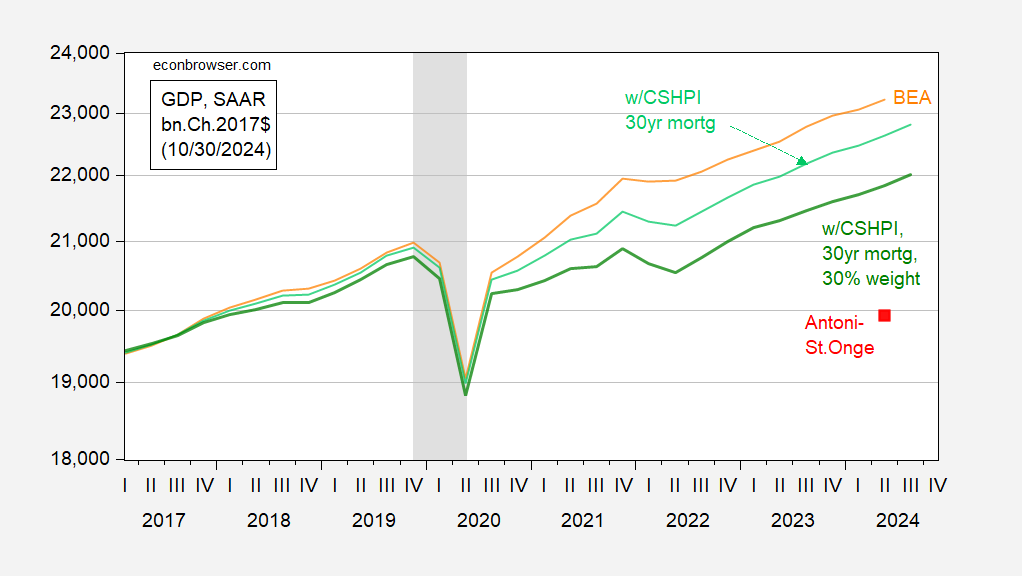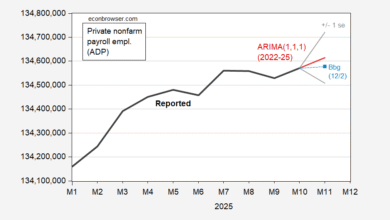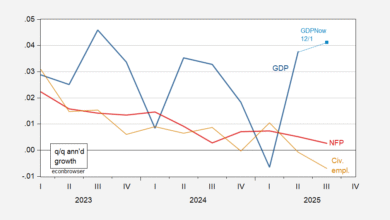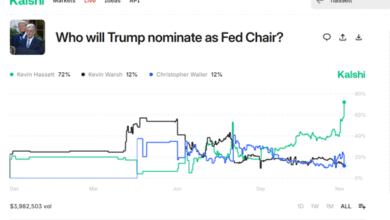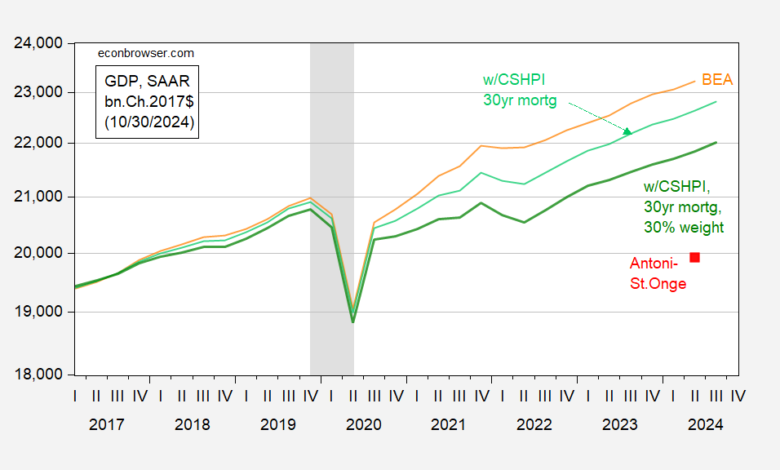
Thet’s Jeffrey Tucker in the Epoch Times via ZeroHedge.
It’s a reasonable supposition that a recession will become obvious to all by next summer. It will then be declared by year’s end. The following year it could become backdated with data revisions that take us to 2022. At that point, it will become obvious to people that we have a major problem. Money velocity will freeze up, and banks will start failing.
Could happen. I’m certainly with Mr. Tucker that a recession could occur. He believes we’ll finally update the data so.
It is not discernible in our time that we are already in recession, but that is because of some brittle statistical measures. If you extend the inflation numbers to include housing and interest, plus extra fees and shrinkflation, minus hedonic adjustments, and then adjust the output numbers by the result, you end up in a recession now.
I think Mr. Tucker is channeling the Antoni and St. Onge (2024) thesis, which was published in his journal. However, as I have noted (also Chinn (2024)), it is almost impossible to reproduce those results. In this updated graph, I show how much the current BEA estimates differ from the Antoni-St. Onge number, and what I get trying to incorporate housing costs using house prices and mortgage rates.
Figure 1: BEA GDP (orange), GDP incorporating PCE using Case-Shiller House Price Index – national times mortgage rate factor index, using BEA weight of 15% (light green), using 30% weight (dark green), Antoni-St. Onge estimate (red square), all in bn.Ch.2017$ SAAR. NBER defined peak-to-trough recession dates shaded gray. Source: BEA, S&P Dow Jones, Fannie Mae via FRED, NBER, and author’s calculations.
To match the Antoni-St. Onge level of GDP for 2024Q2, BEA’s GDP level would have to be revised down 15.3% (log terms)! I think I am safe in saying revisions this large have not occurred in modern history. For instance the downward revision from April 2001 to July 2002 — which made the recession look much worse — was only about 2.5%.
Source link

